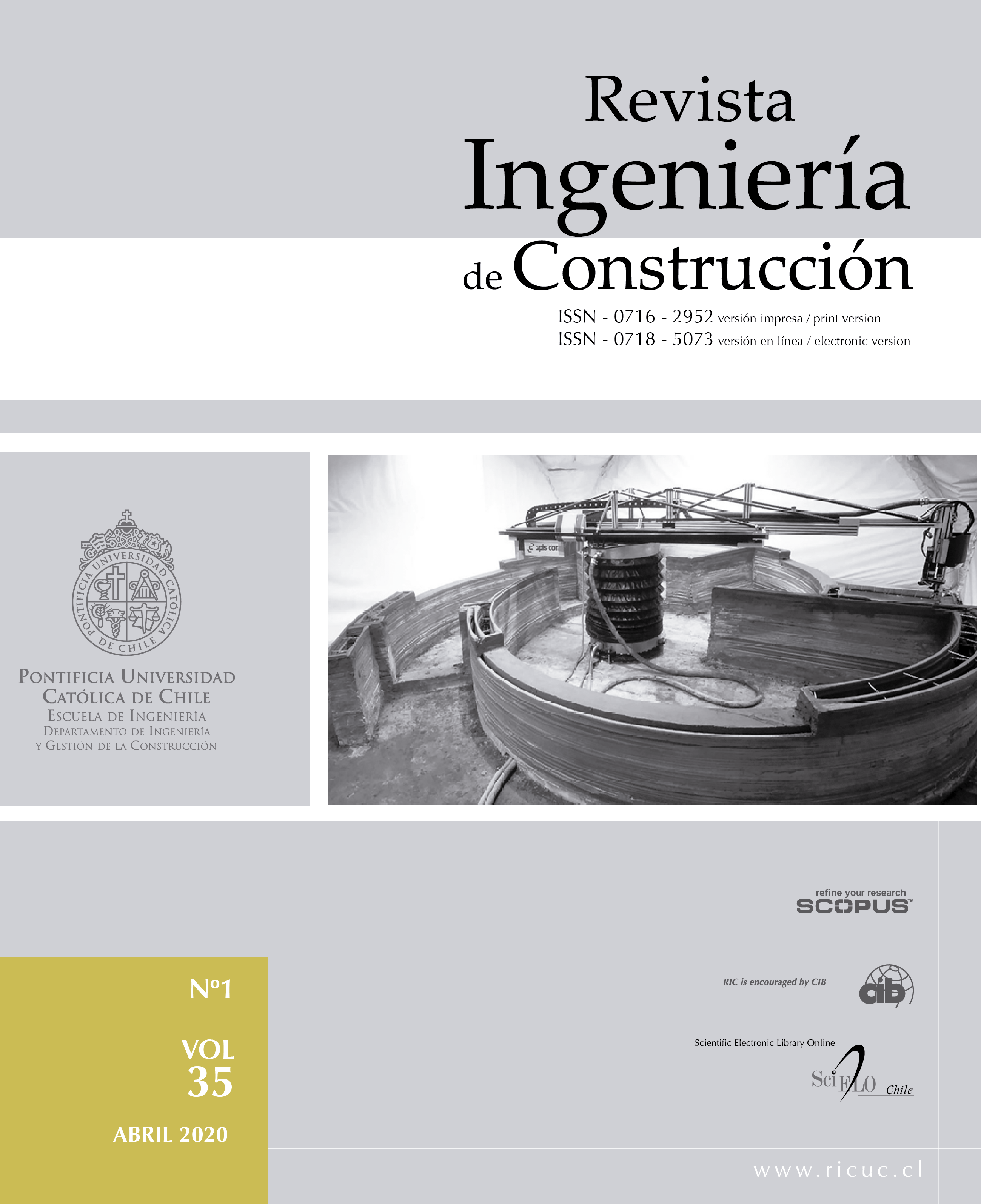Stabilization of soils through the use of oily sludge
DOI:
https://doi.org/10.4067/S0718-50732020000100005Keywords:
Soil stabilization, oily sludge, resilient modulus, subgrade, plasticityAbstract
This study of soil stabilization emerges as an alternative in road construction to replace the conventional materials used in the granular layers and/or to improve the subgrade of the pavement structures, while taking advantage of the waste from oil extraction, in an attempt to mitigate the negative impacts on the environment. Soils from the Tunja region were used. A granular material and a clayey subgrade soil were characterized and later mixed with different percentages of oily sludge. Different tests were conducted to determine the properties and analyze the possible behavior in the field with each mixture, among them the CBR and resilient modules. It was determined that with the addition of 6% sludge the best results are obtained referring to improving the properties of resistance and plasticity of the granular material and 4% for the subgrade, with curing periods of 26 days.


